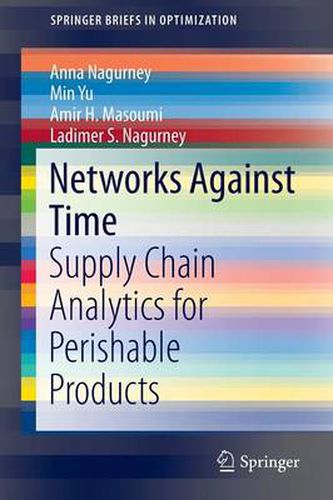Readings Newsletter
Become a Readings Member to make your shopping experience even easier.
Sign in or sign up for free!
You’re not far away from qualifying for FREE standard shipping within Australia
You’ve qualified for FREE standard shipping within Australia
The cart is loading…






This title is printed to order. This book may have been self-published. If so, we cannot guarantee the quality of the content. In the main most books will have gone through the editing process however some may not. We therefore suggest that you be aware of this before ordering this book. If in doubt check either the author or publisher’s details as we are unable to accept any returns unless they are faulty. Please contact us if you have any questions.
Despite significant achievements, the discipline of supply chain management is still unable to satisfactorily handle many practical real-world challenges. The authors of Networks Against Time claim that a unified supply chain network analytics framework is needed which should be able to handle optimization and competitive behavior while also maintain relevance to many industrial sectors in which perishable products are prominent, from healthcare to food and from fashion apparel to technology.
This Brief provides a wide range of critical supply chain problems which are modeled as generalized networks. Guidelines are provided to determine the arc multipliers that capture perish ability of the product whether food, radioisotopes, or even highly perishable blood in healthcare over space and time. Through case studies the authors portray the application of the models and algorithms to real-world sectors which illustrate the power of the framework in practice. The models and algorithms are fully described along with the input and output data in the case studies. This level of transparency is useful pedagogically as well as for future research and for applications in practice.
Researchers and practitioners in mathematics, in operations research and management science, operations management, as well as in economics and computer science will find this book useful to gain a broader appreciation of the richness of network supply chain structures, processes, and applications. This book can also be used by advanced undergraduate students and graduate students in the disciplines noted above to familiarize themselves with methodologies and supply chain network models and applications.
$9.00 standard shipping within Australia
FREE standard shipping within Australia for orders over $100.00
Express & International shipping calculated at checkout
This title is printed to order. This book may have been self-published. If so, we cannot guarantee the quality of the content. In the main most books will have gone through the editing process however some may not. We therefore suggest that you be aware of this before ordering this book. If in doubt check either the author or publisher’s details as we are unable to accept any returns unless they are faulty. Please contact us if you have any questions.
Despite significant achievements, the discipline of supply chain management is still unable to satisfactorily handle many practical real-world challenges. The authors of Networks Against Time claim that a unified supply chain network analytics framework is needed which should be able to handle optimization and competitive behavior while also maintain relevance to many industrial sectors in which perishable products are prominent, from healthcare to food and from fashion apparel to technology.
This Brief provides a wide range of critical supply chain problems which are modeled as generalized networks. Guidelines are provided to determine the arc multipliers that capture perish ability of the product whether food, radioisotopes, or even highly perishable blood in healthcare over space and time. Through case studies the authors portray the application of the models and algorithms to real-world sectors which illustrate the power of the framework in practice. The models and algorithms are fully described along with the input and output data in the case studies. This level of transparency is useful pedagogically as well as for future research and for applications in practice.
Researchers and practitioners in mathematics, in operations research and management science, operations management, as well as in economics and computer science will find this book useful to gain a broader appreciation of the richness of network supply chain structures, processes, and applications. This book can also be used by advanced undergraduate students and graduate students in the disciplines noted above to familiarize themselves with methodologies and supply chain network models and applications.